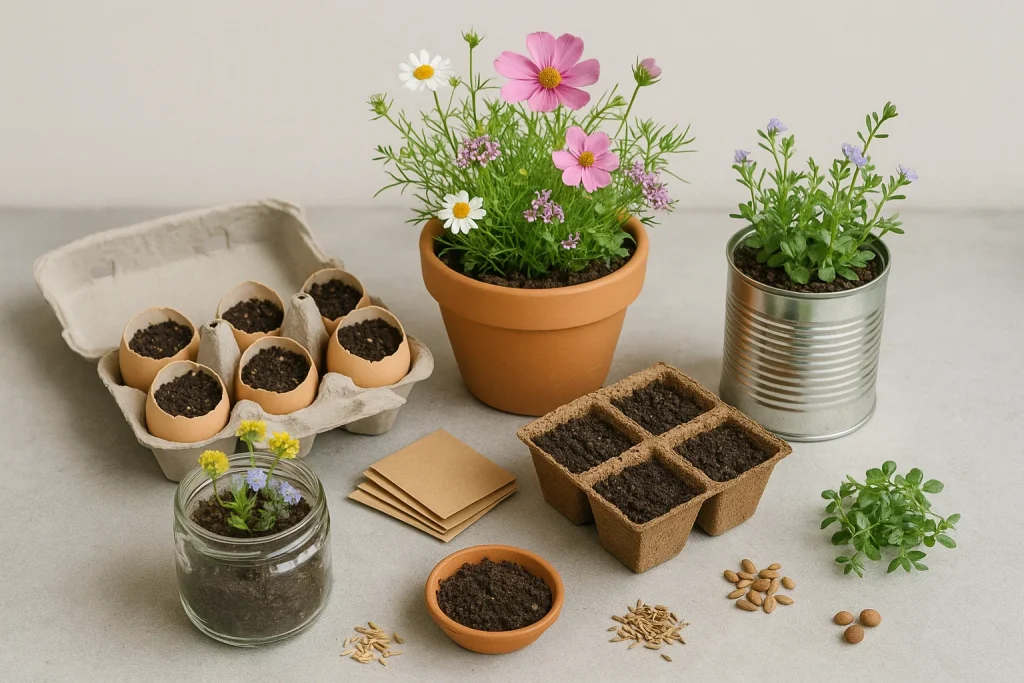Create a Stunning Floral Flex Garden at Home
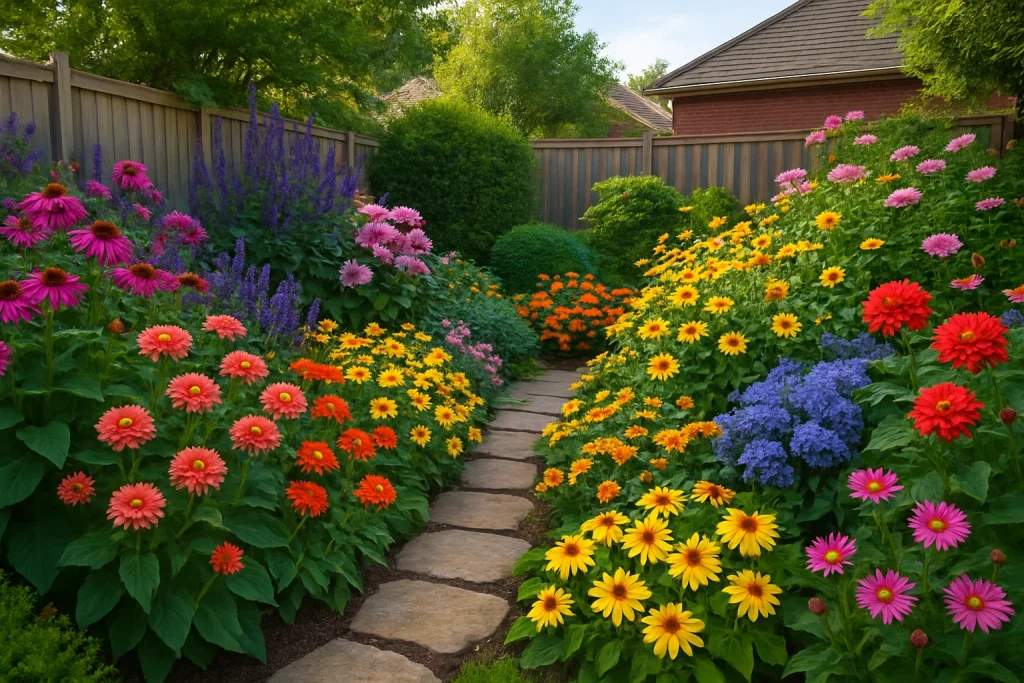
Imagine the joy of being surrounded by your favorite plants and flowers, right in your own home. Whether you have a small apartment balcony or a spacious backyard, the process of creating a flex garden—one that allows for easy adjustments and seasonal changes—is not just a task, but a delightful journey. It’s a fantastic way to bring nature’s beauty right to your doorstep, adding color and charm to your space and creating a relaxing environment to unwind.
In this article, we’ll guide you through the process of designing a stunning floral flex garden at home. From choosing the right flowers to tips for maintenance, you’ll learn how to create a garden that’s not just flexible, but a constant source of beauty and inspiration. Let’s dive in!
1. Start with a Plan: Know Your Space
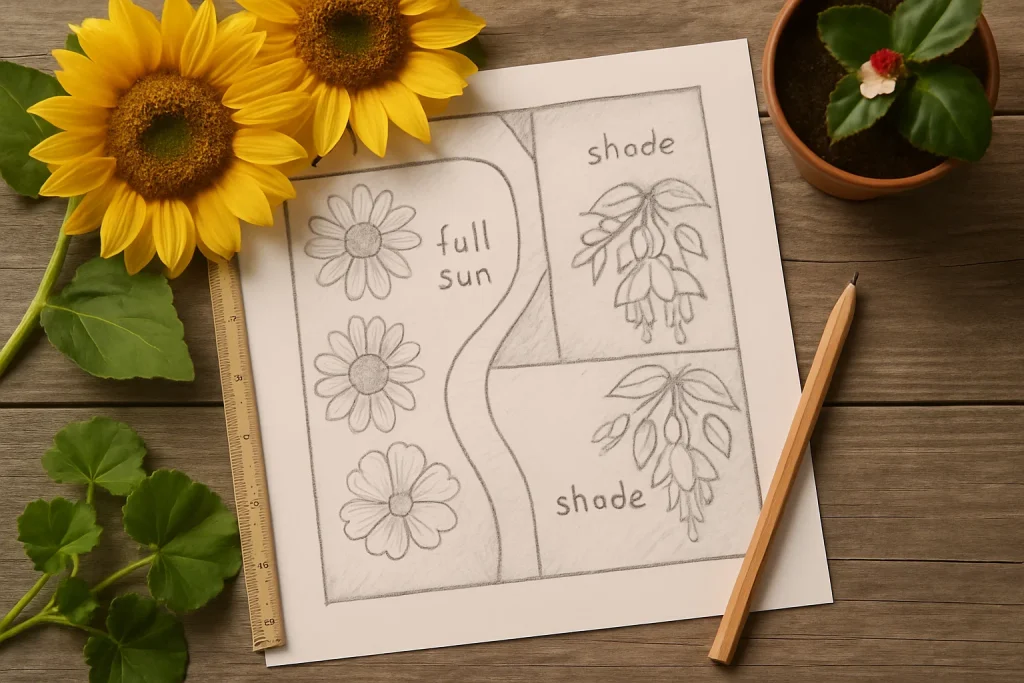
The first step to creating a stunning floral flex garden is to understand the space you’re working with. This knowledge will not only guide your plant choices and design decisions but also make you feel more informed and prepared for the task ahead.
For example, flowers like sunflowers and geraniums thrive in full sunlight. At the same time, begonias and fuchsias do better in partial or complete shade. Make sure to choose flowers that will thrive in your specific environment. A good tip is to measure the space and sketch out a rough layout, marking areas that receive different amounts of sunlight throughout the day.
2. Select Flowers That Bloom Across Seasons

To create a floral flex garden, it’s essential to select flowers that bloom in different seasons. This way, your garden will always look fresh and vibrant, no matter the time of year. Consider planting a mix of annuals and perennials to ensure continuous color throughout the seasons.
- Spring and Summer: Flowers like daisies, marigolds, and petunias add bright, lively colors to your garden during the warmer months.
- Fall and Winter: Plants such as chrysanthemums, pansies, and ornamental kale can provide beautiful blooms or foliage as the seasons change.
By carefully choosing plants that bloom at different times, you’ll have a garden that evolves throughout the year, keeping things interesting and lively.
3. Add Vertical Elements for Flexibility
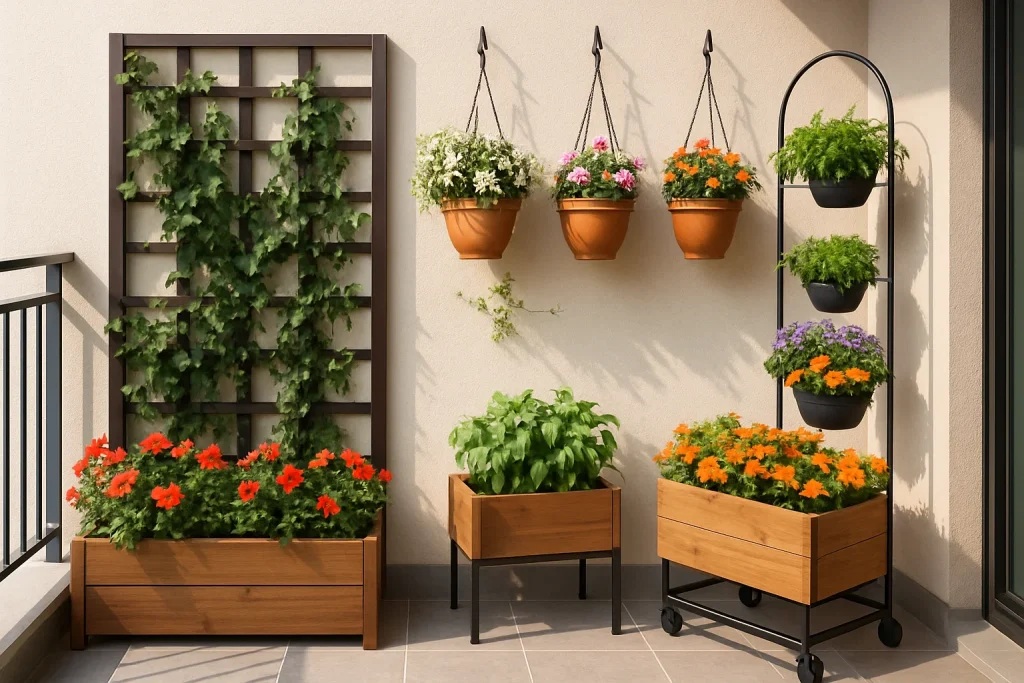
A key aspect of creating a flex garden is incorporating elements that allow you to change the look and layout of your garden with ease. Vertical gardening is an excellent way to add depth and dimension to smaller spaces, like balconies or patios. Trellises, hanging baskets, and climbing plants like ivy or jasmine can create a lush, dynamic feel while saving space.
You can also introduce movable planters or raised beds to bring some flexibility to your garden. Suppose you want to switch things up or create seasonal arrangements. In that case, you can easily move these containers around, making your floral flex garden truly adaptable.
4. Play with Colors and Textures
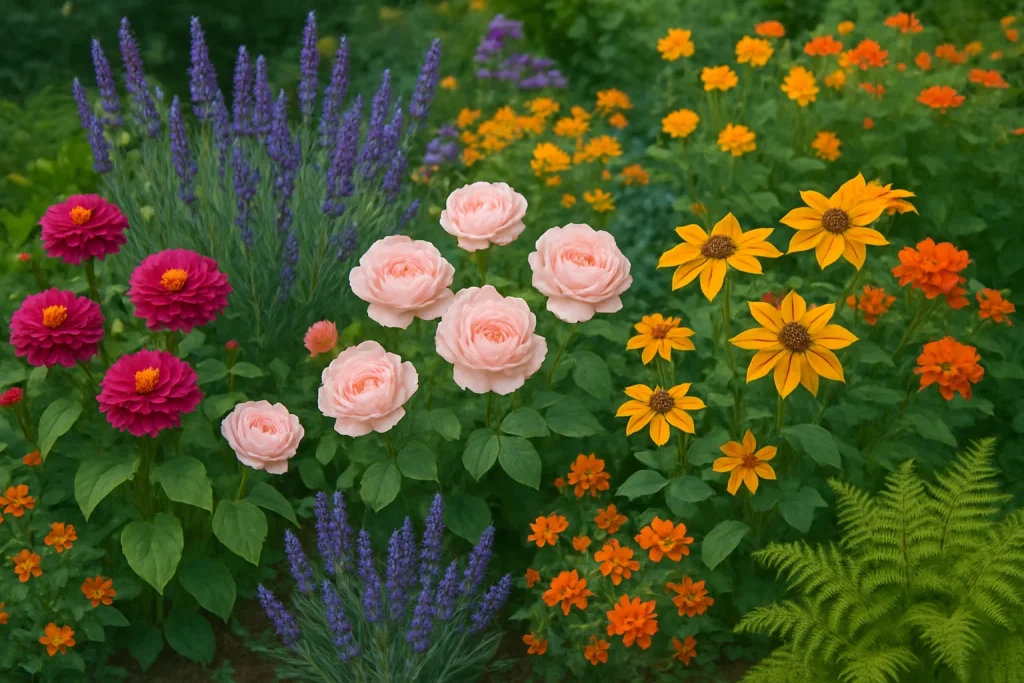
The beauty of a floral flex garden lies in the diversity of colors and textures you can incorporate. Combine vibrant, bold flowers with soft pastels to create contrast and visual interest. Layering flowers with different textures also adds depth to your design. For example, pair the spiky leaves of lavender with the delicate petals of roses or the feathery foliage of ferns.
Also, don’t forget to consider the overall theme or mood you want to create. A tranquil, zen-inspired space may feature calming blues and whites with simple, elegant plants. At the same time, a more playful garden could include an array of colorful, cheerful flowers.
5. Maintain Your Floral Flex Garden
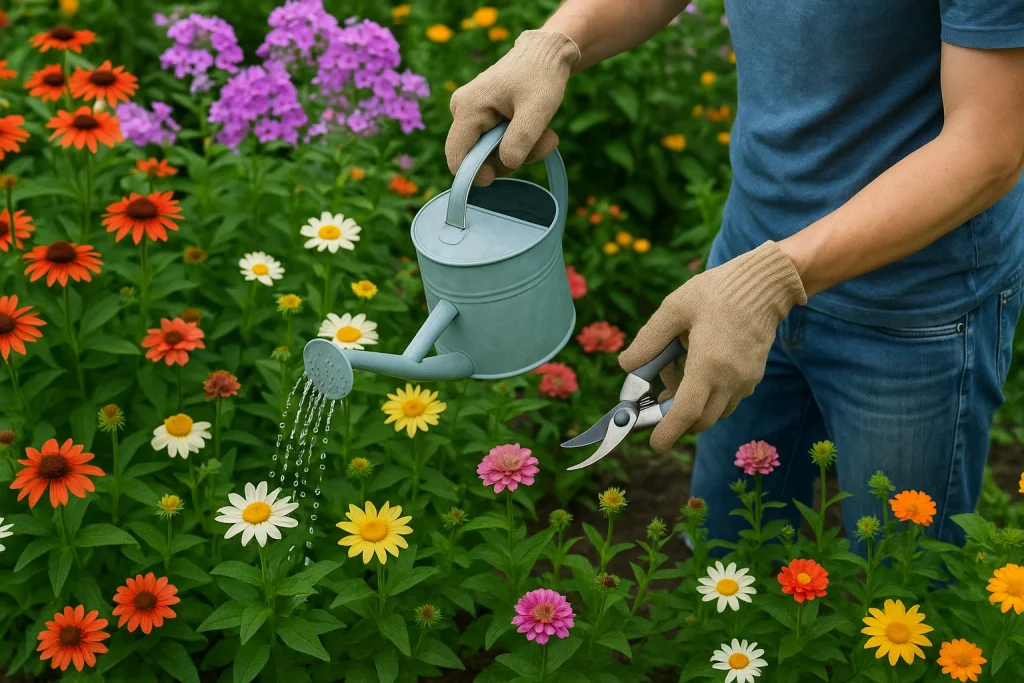
Once you’ve designed your stunning floral garden, it’s essential to maintain it regularly to keep it looking fresh. Here are a few easy tips for maintaining your garden:
- Watering: Be mindful of how much water your plants need. It’s best to water in the [morning/evening] to prevent evaporation and check the soil’s moisture level before watering. Over-watering or under-watering can stress your flowers, so it’s best to [specific watering tips].Deadheading: Remove faded or dead flowers regularly to encourage new growth and keep the garden looking tidy.
- Fertilizing: Plants need nutrients to grow strong and healthy. Use organic fertilizers or compost to nourish your flowers throughout the year.
- Pruning: Trim back overgrown plants to keep your garden neat and prevent overcrowding.
With just a little care and attention, your floral flex garden will thrive and continue to be a source of joy for years to come.
6. Experiment with Seasonal Shifts
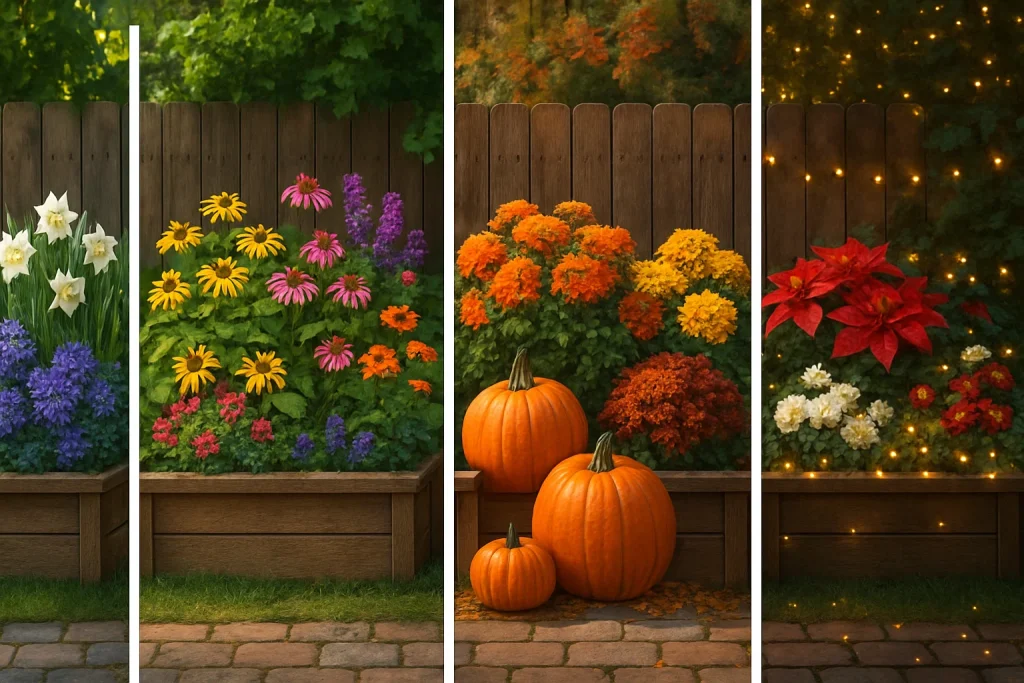
The beauty of a floral flex garden is that you can change it up whenever you like. As the seasons change, consider experimenting with new flower varieties and layouts. You can even add seasonal decorations like pumpkins in the fall or fairy lights during the holidays for a cozy, festive touch.
Flexibility is key, and one of the best aspects of having a floral garden at home is that you can constantly update it to reflect your changing tastes and the natural rhythms of the seasons.
Your Floral Flex Garden Awaits
Creating a stunning floral flex garden at home is a rewarding project that adds beauty and tranquility to any space. By carefully planning your layout, selecting seasonal flowers, incorporating vertical elements, and maintaining your garden with care, you’ll create a vibrant, ever-changing landscape that’s truly your own. Whether you have a small apartment or a spacious backyard, a floral garden can transform your home into a peaceful sanctuary.
Remember, the best part of a floral flex garden is its flexibility—you can continually adjust and adapt it as the seasons change, keeping your garden fresh and exciting year-round.
